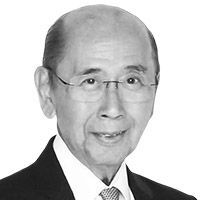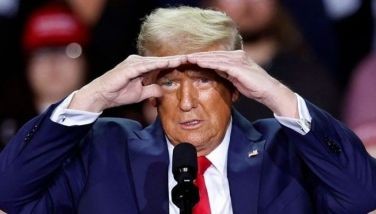A smooth transition is a must

All eyes are now fixed on the presidential race. There’s big talk about big things and the big picture. People are forgetting details, but that’s how you can get the big picture wrong. Before we know it, we will be in political transition from the present administration to the next. A transition that is swift and smooth can help to determine how successful a presidency will be. The new team will want to hit the ground running so as to make its imprint quickly on the new presidential agenda.
Presidential systems like ours, where the civil service is not as strong as in parliamentary systems, need smooth transitions. Attention should be paid by incoming leaders to having some continuity from existing policy to the new road to the future. Ensuring the proper functioning of government is also essential so that new appointees can take up the reins with minimum mishaps to civil service involvement.
In the US the transition period is for 11 weeks and the creation of a transition committee and funding for its operations is provided for by law. The funds are to be applied to office rental and expenses, the hiring of consultants, per diems for temporary reassignments of personnel from government agencies and travel. John F. Kennedy made an important innovation in American presidential transitions through his appointment of 29 task forces, each assigned to a specific policy area and given a mandate to make specific recommendations. The practice was institutionalized with the passage of the Presidential Transition Act in 1963.
In the Philippines there is no such formal mechanism for transition, much less funding. And the transition period is shorter – ranging from seven to eight weeks – depending on how fast the counting can be finished and the winners declared. Despite the absence of such provision in law, each presidential aspirant should already begin to prepare for transition — not for the purpose of identifying choice government appointments, but for getting the new President ready to govern from Day One. Upon his proclamation, the President-elect should mobilize his transition team and appoint a leader who will work with his counterpart in the outgoing administration.
There is no area more important for a proper transition than foreign policy. Too many sensitivities, commitments, understandings and arrangements are at stake to risk any fumbling when the ball is passed. The world will not wait for the new administration to be ready – it will move on.
In principle, transition should be easy since our foreign policy must be guided by our national aspirations and security interest. In real life, however, this may be harder to define precisely and the conduct of diplomacy may require some compromises. This is the President’s call and he has to be provided the most accurate and relevant information to be able to make decisions.
What are the outstanding foreign policy issues that the incoming administration must deal with from Day One? At the risk of being presumptuous, I would say they would include the following:
In terms of its impact on the domestic scene and contentiousness is the Visiting Forces Agreement (VFA), which ironically has come to signify simplistically our relations with the United States. Calls for the termination of the VFA continue and could intensify with the departure of the Arroyo administration. This is an emotional issue that requires rational and deliberate thinking by the new administration.
The linkage between domestic terrorists with regional terrorist organizations and reports of contacts with insurgency movements in the region are worrisome. Unless alertly dealt with, we could become another breeding ground of regional terrorism. This will require close coordination with neighboring countries.
In the South China Sea the Philippines must contend with rival claims to various land and water territories in the area. This requires a delicate balancing act, not least because the other claimants are either economic partners in ASEAN or maintain significant economic ties with us. Needless to say, the People’s Republic of China has both the economic and military muscle to back up its claim. It therefore looms large in our foreign policy horizon.
In the Korean Peninsula, the situation remains volatile and unpredictable, with the threat of the use of nuclear weapons not a remote possibility. The sinking of a South Korean navy vessel for reasons that have yet to be firmly established is but the latest chapter in this dangerous saga.
ASEAN remains the key to the economy and security of Southeast Asia and provides us with a collective identity that gives weight to our relations with countries outside the organization. Our FTAs with China and Japan have come under the ASEAN umbrella. South Korea is next. Can Europe and the US be far behind? As ASEAN economic integration proceeds apace, affected local sectors will test the resolve of the incoming Administration to stay the course. The calendar of ASEAN meetings and ASEAN Plus Three meetings does not give the new administration much time to prepare because these meetings happen in the third week of July.
Aside from ASEAN, the US, Japan, and the PROC, there are others that have a profound influence on our economy including the BRIC (Brazil-Russia-India-China) countries – India specially.
Ensuring fair and equitable benefits from the global flow of goods and services requires an effective and relevant World Trade Organization (WTO). The Doha Round was meant to provide developing economies better opportunities under this global trading system, but negotiations have been stuck for eight years now. The Philippines must decide whether to try to get the negotiations unstuck or take a position with the many options being offered, including a Free Trade Area for the Asia-Pacific now being considered in APEC or an East Asia Community under the East Asia Summit (EAS).
Because we have around 10 million Filipinos working overseas and remitting the equivalent of one-sixth of our GDP every year, the management of their deployment and the protection of their rights have become an important component of our foreign policy.
This is not an exhaustive list; I just want to point out the complex challenges that the incoming administration will face and how important a well-organized transition is for its success.
Knowing the pressing foreign policy issue is one thing. Who will implement them is another. The incumbent DFA undersecretaries are all political appointees whose term will expire on 30 June. Worse, many of our Ambassadors in key countries are political appointees. A vacuum looms if the political transition is not smooth. In the case of AEPs, new Ambassadors will not be confirmed until around October. I understand the DFA has some recommendations which will allow for a seamless transition. I hope the President-elect will approve them.
Getting elected President may seem like the hardest part, but the challenge of actually governing is even more complex. A smooth transition is an absolute must.
The new American Ambassador
I would like to extend a warm welcome to Ambassador Harry Thomas Jr. The list of his predecessors included some of the most respected and accomplished career diplomats: Dick Murphy, Mike Armacost, Steve Bosworth, Nicolas Platt, Frank Wisner, John Negroponte, Tom Hubbard and Frank Ricciardone. I wish you a successful posting enhancing the bilateral relationship of our two countries.
- Latest
- Trending





























